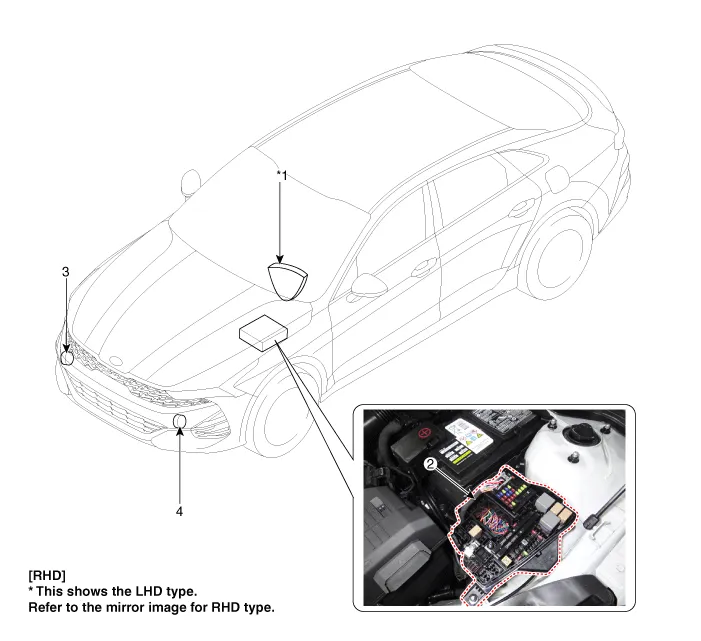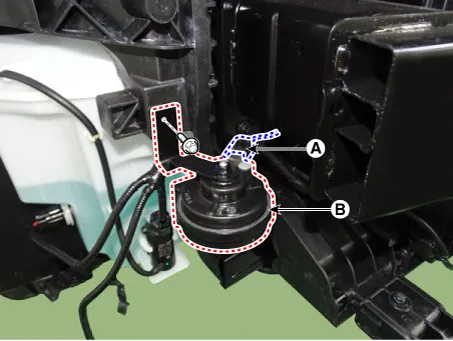Kia Optima DL3: Body Electrical System / Horn
Specifications
| Specifications |
|
Item |
Specification |
Remark |
|
Operating voltage |
9 - 16 V |
- |
|
Current consumption |
MAX 5.0 A |
At 12 V |
|
Sound level |
111 ± 3 dB |
At 13 V, 2 m |
|
Insulation resistance |
MIN 1 MΩ |
By 500 V megameter |
Components and components location
| Component Location |

| 1. Horn switch 2. Engine room junction block (Horn fuse) |
3. Horn (Low pitch) 4. Horn (High pitch) |
Repair procedures
| Removal |
| 1. |
Disconnect the negative battery terminal. |
| 2. |
Remove the front bumper assembly. (Refer to Body - "Front Bumper assembly") |
| 3. |
Disconnect the horn connector (A). |
| 4. |
Remove the horn (B) by loosening the bolt.
[Low pitch]
[High pitch]
|
| Installation |
| 1. |
Install in the reverse order of removal. |
| Inspection |
| 1. |
The relay on the horn of this vehicle is implanted into the metal core block PCB of the engine room relay block. |
The semi-conductor type relay inserted in the PCB is impossible to replace. If the relay needs to be replaced, replace the metal core box and conduct a test on it. |
Schematic diagrams Connector and Terminal Function Repair procedures Removal • Use a plastic panel removal tool to remove interior trim pieces without marring the surface.
Repair procedures Removal 1. Disconnect the negative battery terminal. 2. Remove the steering column upper & lower shroud panel.
Other information:
Kia Optima DL3 2019-2025 Service and Repair Manual: Power Door Locks
C
Kia Optima DL3 2019-2025 Service and Repair Manual: Power Windows
Components and components location Component Location 1. Power window main switch 2. Rear window main switch 3. Front power window motor 4. Rear power window motor Description and operation Description Power Window Safety Function When the driver or passenger p
Categories
- Manuals Home
- Kia Optima Owners Manual
- Kia Optima Service Manual
- Engine Electrical System
- What to do in an emergency
- Power Train
- New on site
- Most important about car



